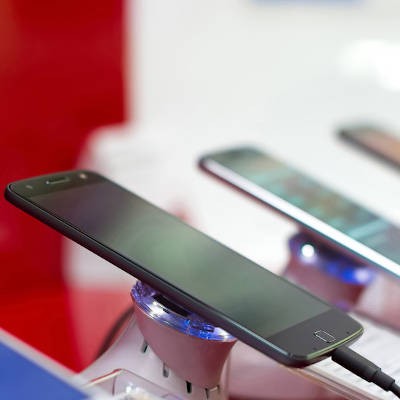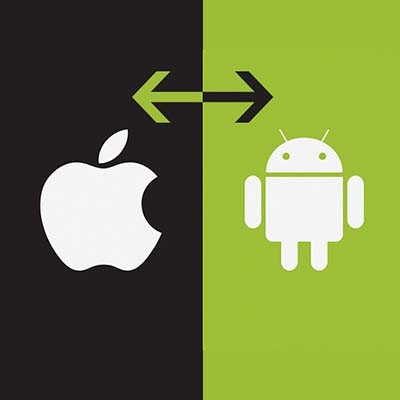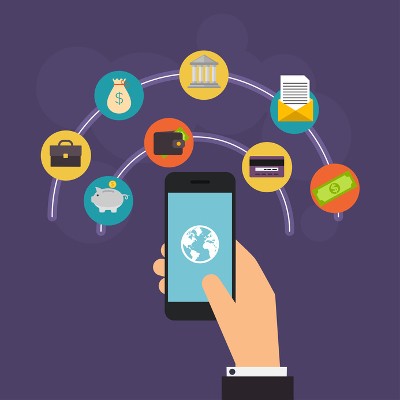Mobile devices are in the same boat as the Internet. They’ve only been around for a couple of decades, but demand for both is inexorable and continues to redefine the way people compute. Let’s look at a brief history of the mobile device and see how we’ve got to the point where society couldn’t function without them.
Argentum IT LLC Blog
Mobile devices (as their name would suggest) go everywhere, including the modern office. As such, it is likely that your employees will want to take advantage of their capabilities to accomplish more of their responsibilities and tasks. This can be advantageous to your business, assuming that you have a well-thought-out mobile device policy in place.
There was a time when people didn’t have to worry about getting computer viruses on their cell phones. Nowadays, with the exponential growth of mobile technologies, including application development options, mobile malware has become a problem, and it can be a big problem for your business. Today, we’ll take a look at the growing mobile malware market, from the threats to what you can do to keep it from being a problem for you.
How many times have you sighed about plugging your phone in, reaching behind your desk to get to the outlet? All of this could change with the addition of near-field induction charging, more commonly known as wireless charging. We’ll review what modern wireless charging is capable of, as well as what kind of obstacles could be avoided through its use.
The world produces over 50 million tons of e-waste every year as consumers and businesses throw out their smartphones, computers, and appliances, less than 20 percent of which is properly recycled. The other 80 percent ends up in a landfill or broken down improperly. Today, we will talk about our growing e-waste problem and what industry professionals are doing to reduce it.
Smartphones are amazing and as a result a lot of people have jumped on board. So, when the annual financials came out, it was a minor surprise to see that the smartphone market was in significant decline. There are many reasons for this, but the main one has to be that older devices are holding up great compared to newer devices. This makes consumers less apt to make the substantial investment to get the latest and greatest device.
One of the major aspects of smartphones is how portable they are. Thanks to them, business professionals can be productive while out of the office, no matter where they are. Unfortunately, this also means that they have more of an opportunity to lose their devices, along with the data they contain. If the device is Android-based, then you can alleviate this trouble thanks to built-in features that can help you find it.
Today the smartphone camera has become one of the biggest selling points when consumers look to purchase a new phone. This is largely because it is crucial to the use of many of the applications that your average user uses the smartphone for. It just goes to show that in less than two decades how much utility the phone has than it did when the Samsung SCH-V200 first offered users the option of taking pictures with their phone.
Have you ever found yourself packing too many things for a short trip? What about your technology? Do you have multiple devices? The truth is that no matter the reason you are traveling, you don’t need to pack like royalty to be able to be productive while you are on the road. Today, we talk about how scaling down your technology while you travel is a solid practice.
Wireless charging seems to be a perfect idea - imagine if someday, our devices would never run out of charge? This may be why such aggressive progress has been made toward building a better battery charger. However, not everyone is convinced that wireless charging will have the effects that are desired of it.
Wireless charging is a challenging technology. While the benefits are clear as day (imagine, only having the one cord to supply power to the charger itself!), the concept has yet to see the mass implementation and adoption one would expect it to. Today, we’ll look at this underperforming technology’s history, a few applications that could be seen in the future, and the holdups it is seeing currently.
Learning how to use a new technology can sometimes be troubling. If you’ve been a dedicated Apple customer throughout the years, but are considering switching allegiances to Android, you should know that simple differences between the two platforms can end up disorienting. Here are a few things you have to know when switching away from the iPhone.
With more and more businesses relying on mobile devices for their business they have to be sure that the use of these devices doesn’t present security issues for the company. With all that is happening in business computing today, finding out how you can protect yourself in lieu of the prevalence smartphones play in the business world is important. Here are a few tips on how to lock it up or lose it, altogether.
Do you know how the countless devices entering the workplace will affect your business’s infrastructure and security? It’s important to remain future-minded about how the Internet of Things and connected devices will influence your business in the near future. According to HAX Hardware Trends, 2018 will see a multitude of changes in how we approach the Internet of Things, as well as how businesses manage it for their networks.
Would your business fall apart if communications halted? This is one of the major pitfalls that businesses have to deal with, as without proper teamwork and communication, operations can fall apart and productivity can be lost. What are some of the ways that your business manages the many modes of communication that it relies on?
Today’s business environment is no longer just a drab gray office setting filled with workstations lining the wall. The office is the coffee shop across the street, or the airport lobby while you’re waiting for your plane to arrive. It’s the client’s office while you’re out on a business trip, or the venue for a business conference where you make valuable connections and exchange contact information. The office has gone mobile, and your business needs to adapt to this change.
Businesses can benefit from the use of personal mobile devices in the workplace, yet there are also potential dangers in allowing mobile and Internet of Things devices to access your network. In order to reduce these dangers, you need to put some limits and guidelines on the use of such devices in the workplace.
Mobile devices have a prevalent place in the modern office. In fact, a recent study by Gartner found that 80 percent of all employees bring their personal mobile device with them to work. This Bring Your Own Device (BYOD) trend comes with a host of benefits, like improved productivity and employee morale, but it increases the risk of a corporate data breach if not properly managed. How should a concerned business owner respond to this trend?
If we asked you to count the number of mobile devices in your workplace, would you be able to do so? This includes smartphones, laptops, tablets, and others--anything that’s not a workstation or hardware tied down to your location. While mobile devices can be beneficial for any business, it’s still important to keep security at the top of your mind. Here are three topics that you need to be sure you’ve considered before allowing mobile devices in the workplace.
Though it’s still a somewhat new concept, payment via mobile device is gaining in popularity. The latest smartphones make it easier than ever to pay bills or send money whenever needed. Yet, this also presents an interesting conundrum. What’s the best way to make mobile payments, and how can they be processed with minimal chance of being compromised?




















